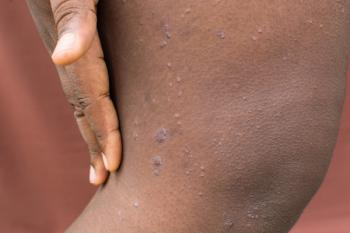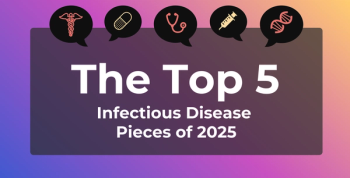
- October 2015
- Volume 21
- Issue SP14
The Need to Raise Awareness for Young Adult Cancer Care
Adolescent and young adult cancer patients face multiple barriers to ensuring adequate care: from unsure providers to financial constraints. Improved care coordination and recognition of the needs of this population can lead to much improved outcomes.
According to the National Cancer Institute (NCI), although the 5-year survival rates of children with cancers has improved dramatically over the years—from 10% a half-century ago to 80% today—survival in the adolescent and young adult (AYA) population has not seen much progress. The 5-year survival rate for AYA patients has stagnated at 70% over the last 30 years.1 These statistics highlight the progress seen in pediatric cancer research, in contrast with the lack of similar advances in AYA research.
One of the barriers to progress in the field of AYA research has been the low enrollment rates in clinical trials observed with the adolescent (15 to 19 years) population. Whereas more than 90% of younger children diagnosed with cancer participate in clinical trials, percentages range between 5% and 34% for the adolescent population. To help identify and resolve some of these issues, the CDC’s Division of Cancer Prevention and Control convened a workgroup in 2014.2 The workgroup identified the following issues with trial enrollment among AYA patients with cancer:
- Low referral rates of adolescent patients with cancer to pediatric cancer centers
- Limited availability of clinical trials for certain cancers
- Physician-related barriers limiting clinical trial accrual
- Institutional barriers impeding collaboration between pediatric and adult oncologists on clinical trials
- Unique psychosocial needs of adolescent patients with cancer.2
One of these challenges—the lack of trials for certain cancers—could be resolved if the pediatric version of the NCI-Molecular Analysis for Therapy Choice (NCI-MATCH) is approved for launch in 2016. The trial design for NCI-MATCH, the adult version of which initiated enrollment in August 2015, analyzes patient tumors for actionable mutations for which a drug already exists. The idea is to target the molecular abnormality rather than the tumor type. The pediatric MATCH, to be led by the Children’s Oncology Group, expects to enroll children with advanced cancers who have progressed on standard therapy and have few other therapeutic options.3 Rajen Mody, MBBS, a pediatric oncologist at the University of Michigan who
Challenges With Care Transitions
An important aspect of AYA cancer care—a fact that resonates with several contributors in this issue of Evidence-Based Oncology—is the challenge presented by the age of the YA patients. The physiologic and psychosocial changes that accompany a child’s transition into adulthood can be traumatic enough for a teenager. When they suffer from cancer, however, the disease and its associated treatment sometimes requires these patients to place their “normal” life on the back burner, which can further fuel the emotional upheaval.
Additionally, medical challenges associated with transitioning AYAs from pediatric oncology care to adult-focused care are many, the most important being educating both survivors and providers on the long-term health risks that cancer treatment brings. Several cancer centers have long-term follow-up (LTFU) programs to assist with the transition. The LTFU programs not only cater to the needs of survivors and their families, but also assist specialists of adult medicine who lack the knowledge or skills to care for these complex patients.4
However, there’s often a disconnect among the pediatric oncologist, the survivor, and the primary or specialty care providers that survivors see outside of oncology. These barriers could be associated with the health system (eg, care policies or medical insurance), the healthcare provider (eg, knowledge of late effects, core beliefs in prevention, or organizational structure of the clinical practice), or the survivor (eg, psychological factors, risk awareness, spiritual beliefs).
Disease-specific models have been developed and tested that include a transition team of subspecialists in pediatric and adult medicine; their role is to bridge the pediatric team and the adult medicine team. The following are elements of a suitable transition and transfer plan for a YA cancer survivor:
- Before the visit:
o initial data collection
o core team meeting
- Clinic visit:
o introduction of program concepts
o history and physical examination
o participation of trainees
o patient education
o modification of patient care plan
o appropriate therapeutic intervention
o referrals as needed
- After the clinic visit:
o review of all available data on the patient
o finalize patient care plan and long-term care plan
o communication with associated care providers, patient, and family
- Ongoing:
o Web-based education system for care providers
o clinical research studies
o educating care providers
o support groups for survivors and families
o develop protocols for long-term follow-up of pediatric cancer survivors.5
Insurance Woes
Insurance coverage for YAs who have survived the medical trauma is another challenge. Having spent a lot of their time fighting the disease and then readjusting to their daily routine, these individuals are likely to have interrupted their education or to have seen a career halt. Two-thirds of pediatric cancer survivors develop a chronic medical condition. However, less than half of adult survivors who were a part of the longitudinal cohort of the Childhood Cancer Survivor Study received a cancer-related visit during a 2-year study period. Further, those without insurance were, not surprisingly, at the greatest risk of inadequate follow-up.6
Fortunately, the Affordable Care Act enacted in 2010 has provisions to broaden coverage that could be relevant for pediatric cancer survivors. The following specific provisions could particularly help YA survivors of pediatric cancer:
- Prohibition of discrimination on the basis of health status (no denial or cancellation of coverage for newly developed or preexisiting conditions)
- Coverage on parent’s insurance (through age 26 years on parents’ private insurance)
- Change in minimum income eligibility for Medicaid (states can raise eligibility to 133% of the federal poverty line)
- No annual or lifetime coverage limits
- State-based exchanges (qualifying individuals can receive subsidies).6
According to Archie Bleyer, MD, a pediatric oncologist at Oregon Health and Science University, “We need to rethink and develop a new discipline of young doctors who can take care of adolescents and young adults. And we, as a society, have to overcome the idea of someone turning 18 and suddenly becoming an adult. This artificiality is also hurting medicine.”7
References
- Clinical trials offer a path to better care for AYAs with cancer. National Cancer Institute website. www.cancer.gov/types/aya/clinical-trials-better-care-for-ayas. Published July 26, 2011. Accessed September 16, 2015.
- Tai E, Buchanan N, Eliman D, et al. Understanding and addressing the lack of clinical trial enrollment among adolescents with cancer. Pediatrics. 2014;133(suppl 3):S98-S103.
- NCI-Molecular Analysis for Therapy Choice (NCI-MATCH) trial. National Cancer Institute website. www.cancer.gov/about-cancer/treatment/clinical-trials/nci-supported/nci-match. Updated August 17, 2015. Accessed September 9, 2015.
- Henderson TO, Friedman DL, Meadows AT. Childhood cancer survivors: transition to adult-focused risk-based care. Pediatrics. 2010;126(1):129-136.
- Oeffinger KC. Longitudinal risk-based health care for adult survivors of childhood cancer. Curr Probl Cancer. 2003;27(3):143-167.
- Mueller EL, Park ER, Davis MM. What the Affordable Care Act means for survivors of pediatric cancer. J Clin Oncol. 2014;32(7):615-617.
- Mendes E. Childhood cancer research challenges and opportunities. American Cancer Society website. www.cancer.org/research/acsresearchupdates/childhoodcancer/childhood-cancer-research-challenges-and-opportunities. Published August 28, 2014. Accessed September 10, 2015.
Articles in this issue
about 10 years ago
Financial Toxicity and the Young Adult Cancer Survivorabout 10 years ago
FDA Updates in Oncologyabout 10 years ago
Managed Care Updates in Oncologyabout 10 years ago
Sticking Up for the 340B Programabout 10 years ago
Bridging the Care Gap Between Pediatric and Young Adult Cancerabout 10 years ago
Coordinated, Personalized Care to Improve AYA OutcomesNewsletter
Stay ahead of policy, cost, and value—subscribe to AJMC for expert insights at the intersection of clinical care and health economics.









































